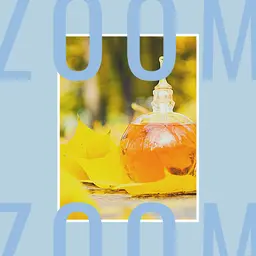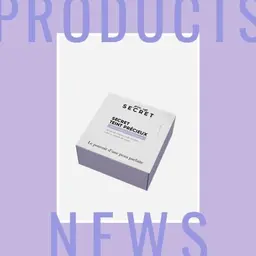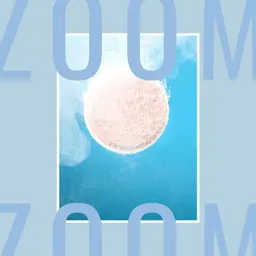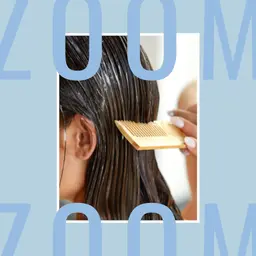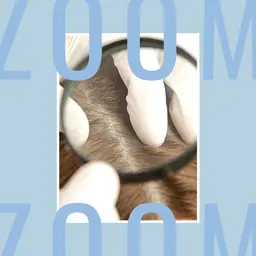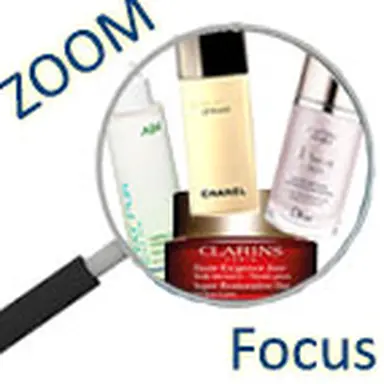
In search of new active ingredients, luxury brands are investing in this island in the Indian Ocean and developing cosmetic ingredient cultures, often organic and fair trade. A good opportunity for them to demonstrate that nature is an inexhaustible source of inspiration, as much as of ethical and committed beauty. Zoom on the cosmetic news of the week by Ariane Le Febvre.
Despite deforestation and soil erosion, Madagascar is one of the richest places in terms of biodiversity on the planet, with endemic fauna and flora, which exist nowhere else. Its originality lies in this extreme diversity of plant species (estimated at 12 000 !). An extraordinary crucible for cosmetics. The biogeographical isolation, the variety of climates and reliefs (the island unites a real mosaic of landscapes: bush, primitive forest, volcanic massifs, savannas, coastal mangroves, coral reefs, aquatic jungle…), explain the richness of this unique flora in the world. Moreover, Malagasy people have always treated themselves with nature, having learned over the centuries to know the active ingredients present in the countless aromatic and medicinal plants that grow in their country. Encouraged by the government (the area of the island's protected areas has tripled since 2003 to reach six million hectares), groups, first pharmaceutical (such as Pierre Fabre with the famous Madagascan periwinkle with its anti-cancer properties), then cosmetic, are increasingly interested in this fabulous plant heritage, as much as in the traditional pharmacopoeias linked to it. Already famous for its essential oils (niaouli, ylang-ylang…) or its vanilla (Madagascar is today the first producer of vanilla in the world), the island becomes the kingdom of ethnobotanists. It conceals a wealth of natural treasures whose scientific exploration has only just begun. For many, the cosmetic ingredients of the future (mainly anti-aging) are found there.
A serious avenue to explore for the future of care
It all began in 1992 with the creation of the Dior Garden in Ranomafana, in the heart of the tropical forest. The brand cultivates Longoza extract, a flower endowed with a natural self-regenerating power and harvested since always by Malagasy women to embellish their skin. Established in partnership with the local populations, this rare territory obeys patient requirements (it takes more than five years to see a Dior Garden born) and exceptional, in order to obtain unique assets in terms of power and purity. Pampered, the flowers are grown in optimal conditions. From the seeds of Aframomum Augustifolium, the brand shapes a floral active called the"pearl of Madagascar". More than ten years have been necessary for researchers to discover its action on several biological anti-aging markers (Longoza stimulates various preponderant genes in the key mechanisms of epidermis formation). Maison Dior is committed to respecting local best practices in hand harvesting, according to an environmentally friendly process. Each Longoza flower gives birth to a scarlet red fruit whose characteristic colour indicates full maturity and the promise of containing about twenty precious seeds. An entire village is dedicated to identifying ripe fruit and picking it. This village alone can get up to 500 kilos of seeds per year. The extraction of the active ingredients from Longoza then undergoes a four-step transformation process: grinding of the seeds until a fine powder is obtained, decantation to extract the active molecules, concentration and purification. " The selection of a new plant species is often guided by careful observation of nature, but also by the study of ancestral know-how and traditions. This so-called"ethno-guided screening" method is at the origin of the discovery of Longoza, present in all the treatments in the Capture Totale range. Once detected, the latter was subjected to a long observation phase in order to understand in the smallest details its botanical characteristics (cultivation requirements, flowering period, influence of climate variations on the quality of its flowers, etc.). Longoza is a global anti-aging active that targets the skin's deepest stem cells to fight against wrinkles and loss of firmness. ", says Patrice André, ethnobotanist at Dior. We will find this extract from January 16 in the latest Capture Totale Dreamskin, Global anti-aging care creator of perfect skin, 30 ml, 105 €.
The brand persevered in 2002 with Centella asiatica from Madagascar, grown in the Ambohidray Garden. Well known for its healing properties, its harvest involves the collaboration of two villages. A unique green process has been created to draw from within the plant its heterosides, molecules that act on collagen synthesis. To check in all Hydra Life treatments, like the recent Hydra Life BB Eye Creme, 6 ml, 42 €. Madagascar's Centella asiatica is also the star active ingredient of the latest Pure State Repairing and Firming Active (100 ml, 25.80 €). Its active molecule content (madecassoside, asiaticoside) is guaranteed. Extracted from the leaves of Centella asiatica, it is harvested manually in the highlands region (Ecocert harvesting area), following a responsible and environmentally friendly approach. Only the leaves of plants larger than 3 cm are harvested in order to preserve the natural resource.
Exceptional spices
The story continues in the early 2000s with Chanel who discovers at the bottom of the Malagasy jungle a very particular vanilla..: Vanilla Planifolia PFA (PFA stands for PolyFractionnement des Actifs, a specific process developed by the brand, which creates ultra-pure and patented cosmetic active ingredients). Passed to the caudine forks of the Chanel laboratory of Sophia-Antipolis, the fruit and the flower of this local vanilla reveal a high rate of polyketones, powerful antioxidants which encourage cellular renewal. In 2002, the company invested in an Ecocert certified organic plantation of half a hectare, as well as in a distillery. A sustainable development program is set up and partnerships are signed with local farmers, who are committed to growing this rare plant under the best conditions. Thanks to the PFA process, after purification and concentration, Chanel manages to obtain from the original extract a polyketone level 42 times higher than normal. This regenerating active ingredient is thus present in all the products of the Sublimage line (latest innovation: Sublimage Le Fluide, Ultime Regeneration of the skin, 50 ml, 224 €). It takes 60,000 green fruits (ripening destroys polyketones) and 14,000 fresh flowers to make 1 kg of Vanilla Planifolia PFA .
The brand continues its quest for exceptional cosmetic ingredients and in 2007 discovers a blue ginger that only grows on the high plateaus of Madagascar: the Blue Ginger PFA present in the Beauté Initiale and Hydra Beauty ranges. This ginger is a broad spectrum antioxidant that strengthens the cellular self-defense system. Very stable, it offers global protection against various oxidative stresses, stimulates SOD (superoxide dismutase), ensures cellular homeostasis and increases the skin's"self-defence", whatever the environment.
A healing tree
2014: Clarins is back on the scene with its redensifying Harungana extract, which can be found in the new Haute Exigence Jour Multi-Intensive formulas for mature skin, available from 13 January (3 versions: all skin types, very dry skin or with a SPF 20, 50 ml, 97.50 €). From the leaves of the tree Harungana madagascariensis, this bio extract, obtained within a fair trade program, reveals its ability to boost the expression of two genes modulating fibroblast morphology and activity. The brand has, in fact, identified these two genes which, under the effect of hormone deficiencies occurring after the age of 50, lead the fibroblast to no longer fulfil its role as a"loom". Harungana extract stimulates collagen synthesis and, depending on the brand,"is used in the production of collagen". is more powerful than molecules known for this activity such as retinol ". Well known in traditional Malagasy medicine for treating wounds, this tree also promotes reforestation by colonizing the bare soils of decimated forests. Its harvesting (only the leaf is harvested) is carried out in partnership with the association Jardins du Monde and the Malagasy populations.
Malagasy plants, far from having revealed all their secrets, still prepare us beautiful surprises. A godsend for the local people…as for our skin!
Ariane Le Febvre





